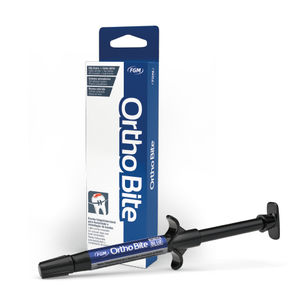
- Dental
- Dental practice
- Endodontic dental material
- FGM Dental Products

- Products
- Catalogs
- News & Trends
- Exhibitions
Dental whitening material Whiteness Perborato endodonticgel

Add to favorites
Compare this product
Characteristics
- Applications
- for dental whitening, endodontic
- Form
- gel
Description
Whiteness Perborato
Whitening gel based on sodium perborate and hydrogen peroxide at 20% for non-vital teeth.
Excellent consistency: paste with ideal viscosity after handling.
Versatility: mixing in the ideal proportions for use (2:1 or 1:1)
Advantages
Versatility: It can be mixed with hydrogen peroxide (that comes with the product), with distilled water, or with saline.
Excellent consistency: Ideal viscosity after handling. It can be mixed in the proportion of 1 part of powder for 1 part of liquid or 2 parts of powder for 1 part of liquid.
Alkaline ph: Minimizes side effects.
Indications
For whitening of non-vital teeth via application and maintenance inside the pulp chamber (walking bleach technique).
Before starting treatment, read carefully the warnings, precautions, contraindications and possible side effects.
1
Make sure (both clinically and by X-Ray) that the endodontic treatment is adequate. Record the shade of the tooth to be whitened using a shade guide and/or photograph prior to beginning whitening.
2
Make the access to the pulp chamber, removing all restoration materials and exposing the canals inlet with gutta percha.
3
Having cleaned the pulp chamber, deepen the canal’s entry by removing approximately 3mm of filling to make the cervical sealing aiming at avoiding the whitener to go into the root canal and spreading towards the periodontal. We recommend cervical sealing to be made using glass ionomers or fluid composite.4
Prepare the paste of Whiteness Perborate. The proper rate to obtain enough quantity to fill one cavity is 1 powder spoon to 1 drop of liquid.
VIDEO
Related Searches
- Dental material
- Restoration dental material
- Implant abutment
- Straight implant abutment
- Internal implant abutment
- PMMA dental material
- Dental prosthesis dental material
- Dental crown material
- Ceramic dental material
- Dental bridge material
- Translucent dental material
- Milling dental material
- Bone substitute
- Dental laboratory dental material
- Composite dental material
- Orthodontic material
- Opaque dental material
- Photopolymerizable dental material
- White dental material
- Temporary dental material
*Prices are pre-tax. They exclude delivery charges and customs duties and do not include additional charges for installation or activation options. Prices are indicative only and may vary by country, with changes to the cost of raw materials and exchange rates.



























